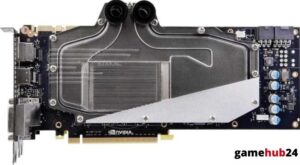Three-dimensional modeling, texture mapping, and polygon rendering are essential components of the intricate combination of art and technology that is video game visuals. Understanding how game engines, graphics, and hardware interact allows one to fully enjoy the immersive gaming experience that they offer.
The visuals in video games combine art and technology to provide players an immersive experience. They entail polygon rendering, texture mapping, and 3D modeling. The tools required for creating games are provided by game engines such as Unity and Unreal Engine, which have an impact on all aspects of a game’s graphics. Character design and animation are examples of video game art that improves the gameplay. The performance and quality of a game’s graphics are determined by the hardware and software of a gaming system. The limits of visual realism in games are pushed by sophisticated techniques like ray tracing and shaders.
- 3D modeling provides depth and realism to game visuals.
- Texture mapping enhances the visual detail of 3D models.
- Polygon rendering converts 3D models into 2D images for display.
- Game engines provide tools for rendering graphics and managing memory.
- Video game art creates a cohesive visual narrative to enhance gameplay.
- Hardware and software determine the quality and performance of game graphics.
- Advanced techniques like shaders and ray tracing enhance visual realism.
What are the basics of video game graphics?
The visual components of a video game, the graphics, are a sophisticated fusion of art and technology. They serve as a medium for communicating the story and gameplay of the game. The fundamentals of gaming graphics include things like texture mapping, polygon rendering, and 3D modeling. Together, these components build the rich environments that players explore. The player’s enjoyment and level of involvement can be greatly influenced by the quality and detail of these graphics. The growth of video game images has been a monument to the unrelenting advancement of technology, spanning from the pixelated characters of the NES period to the lifelike surroundings of titles like Crysis and Far Cry 5.
What is the role of 3D modeling in video game design?
In video game creation, 3D modeling is essential since it gives the graphics in the game depth and realism. It entails turning a three-dimensional object or character from a game into a mathematical representation. A new era of immersive gameplay was ushered in with the early use of this technology by titles like Super Mario 64 and Star Fox. Three-dimensional (3D) models can be as simple as forms or as intricate as structures, with each point in the model being specified by coordinates in three dimensions. For example, The Legend of Zelda is well known for its detailed 3D modeling, which gives life to its fantastical setting.
How does texture mapping contribute to video game aesthetics?
One method used to give 3D models in video games more realism is texture mapping. It entails adding a texture—a 2D image—to the surface of a 3D model. Through this technique, the model’s visual detail is improved and its appearance is more realistic. Complex visual effects like light reflection, shadows, and color changes can be replicated with texture mapping. For example, Rockstar Games uses texture mapping to create its unique, realistic settings.
Did you know that Star Fox, a 1993 Nintendo title, was the first video game to employ three-dimensional graphics? It was a turning point in the history of the video game industry, opening the door for classic titles like Super Mario 64 and Zelda.
What is the significance of polygon rendering in video games?
An essential component of video game visuals is polygon rendering. It entails transforming polygon-based 3D models into 2D pictures that may be viewed on a screen. A model seems more realistic and detailed the more polygons it contains. But drawing a large number of polygons takes a lot of processing power. As a result, game designers need to balance performance and visual quality. Crytek games, such as Metro Exodus, are renowned for their amazing visual effects and high-polygon models.
How do game engines influence video game graphics?
The visual design of a video game is influenced by game engines, which are the beating heart of the industry. They offer the frameworks and tools required to create games, such as those for memory management, physics simulation, and graphic rendering. The gaming business has seen a change thanks to game engines like Unity and Unreal Engine, which make it comparatively simple for developers to construct intricate and graphically spectacular games.
What is the role of game engines in video game development?
As the framework on which games are constructed, game engines are essential to the creation of video games. By streamlining the creation process using their suite of development tools, they free up developers to concentrate on the artistic elements of game production. Among other difficult jobs, game engines manage memory, simulate physics, and render images. This spares developers from writing every line of code from start, enabling them to construct visually appealing and intricate games.
How do game engines affect game resolution and frame rate?
The frame rate and game resolution—two essential elements that dictate gameplay fluidity and visual quality—are greatly influenced by gaming engines. The resolution of the game, or the degree of visual detail, is determined by the rendering power of the game engine. Meanwhile, the hardware’s capabilities and the engine’s efficiency affect the frame rate, or the number of frames displayed each second. The player’s experience is improved by smoother motion in games with a higher frame rate.
It’s crucial to strike a balance between performance and visual quality while creating game visuals. High-polygon models need a lot of processing power, yet they can produce beautiful images. Crytek games, such as Metro Exodus, are renowned for their amazing visual effects and high-polygon models.
What is the role of video game art in creating immersive graphics?
A key element in creating images that are captivating and immersive is video game art. It includes a variety of fields, such as animation, environment design, and character design. The goal of video game art is to provide a seamless visual story that improves the gameplay experience, not only to create visually pleasing elements. The art of video games has changed considerably over time, from the pixel art of old games to the photorealistic graphics of newer releases.
How does pixel art contribute to video game aesthetics?
The aesthetics of video games are greatly enhanced by pixel art, a type of digital art in which images are produced at the pixel level. Pixel art has a distinct charm. Pixel art has been a popular choice for many independent game developers because, despite its simplicity, it can express an unexpected amount of information and emotion. Pixel art has been used to great effect in games like Celeste and Shovel Knight, producing recognizable visual styles that gamers find appealing.
What is the impact of video game animation on player experience?
Animation in video games gives a game’s static elements alive, increasing the player’s immersion and engagement. It covers how items and characters move within the game, which adds to the gameplay and story of the game. Playing a game with well-done animation can increase its responsiveness and enjoyment. For example, the smooth animation in titles like Super Mario 64 and The Legend of Zelda enhances the gameplay experience overall.
How does video game hardware and software affect graphics?
The two fundamental components that underpin the visual extravaganza of video games are the hardware and software. The raw processing power required to render the game’s graphics is provided by the hardware, such as the computer or game console. The software, which includes the graphics drivers and game engine, converts the game’s code into breathtaking graphics in the meantime. The interaction of software and hardware determines how well a game’s graphics work and how good they are.
What is the role of video game consoles in rendering graphics?
Graphics rendering is significantly influenced by video game systems. The graphic quality and performance of the game are dependent on the hardware of the console, including the CPU, GPU, and memory. Strong technology in consoles like the PlayStation 5 and Nintendo Switch allows for the seamless rendering of high-definition graphics at consistent frame rates. But a game’s graphics aren’t only determined by the capability of the system. The software used in the game, such as the graphics drivers and engine, is also quite important.

How does video game software contribute to the visual effects?
Modern games feature amazing visual effects that are mostly the result of the work of video game software. This comprises the graphics drivers, which convert the game’s code into visual output, and the game engine, which offers the tools and frameworks for producing and rendering the images in the game. The realism and immersion of a game can be increased by using sophisticated software techniques like ray tracing and shaders to recreate intricate visual effects like lighting, shadows, and reflections.
What are the advanced techniques used in video game graphics?
The limits of visual realism in video games have been pushed by cutting-edge graphics techniques like ray tracing and shaders. Shaders can be used to produce a vast array of effects, from straightforward color shifts to intricate skin and water simulations. In contrast, ray tracing generates realistic lighting and reflections by modeling the way light interacts with in-game objects. These methods are usually used in high-end video games and gaming consoles, and they need a lot of processing power.
What are shaders and how do they enhance video game realism?
A kind of software called a shader is used in 3D rendering to provide a variety of visual effects. In order to produce effects like lighting, shadows, and reflections, they operate by adjusting the characteristics of pixels and vertices, the fundamental building blocks of 3D graphics. By simulating intricate elements like skin, hair, and water, shaders can improve the realism of the game’s visuals. Advanced shader techniques are used in games like Crysis and Far Cry 5 to provide amazing visual effects.
How does ray tracing contribute to video game visual effects?
A rendering method called ray tracing mimics how light interacts with objects in a scene to provide realistic lighting and reflections. In order to determine how light interacts with the objects it encounters, it tracks the path taken by light rays from the camera to the objects in the scene and back. This method needs a lot of processing power, yet it can produce incredibly realistic images. Ray tracing is used in games like Cyberpunk 2077 and Metro Exodus to improve visual effects and achieve a level of realism never before seen in video games.

















